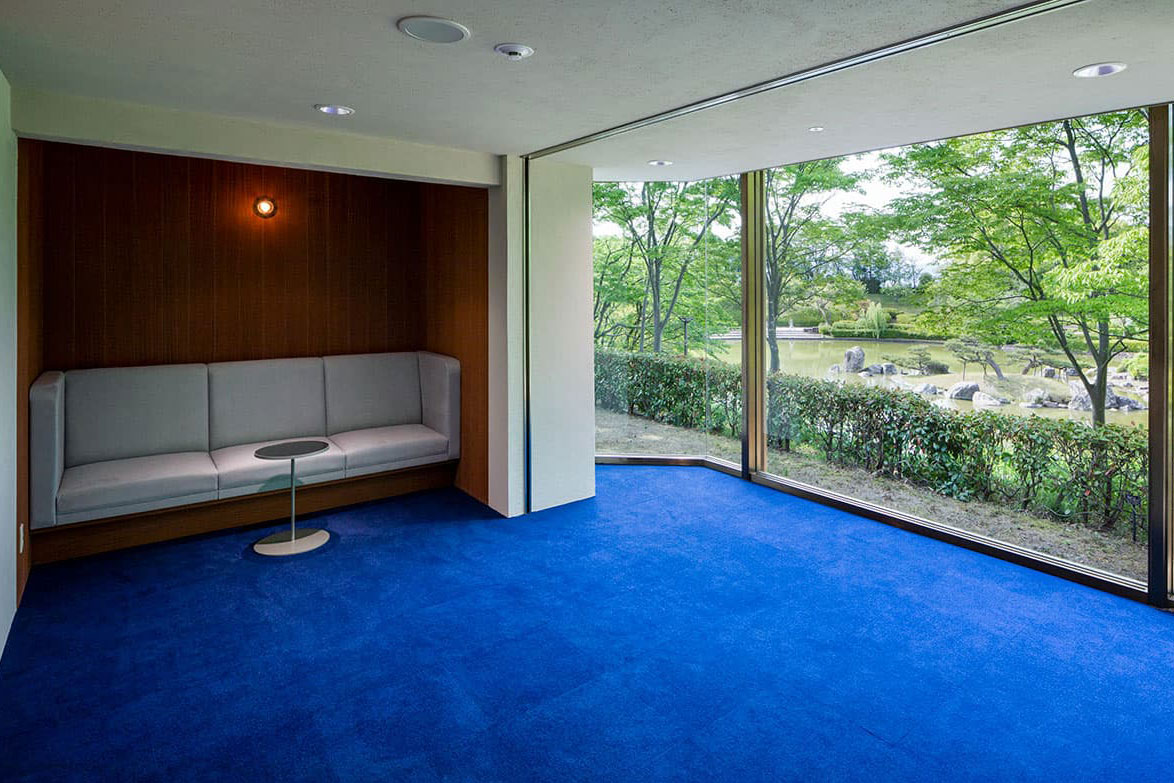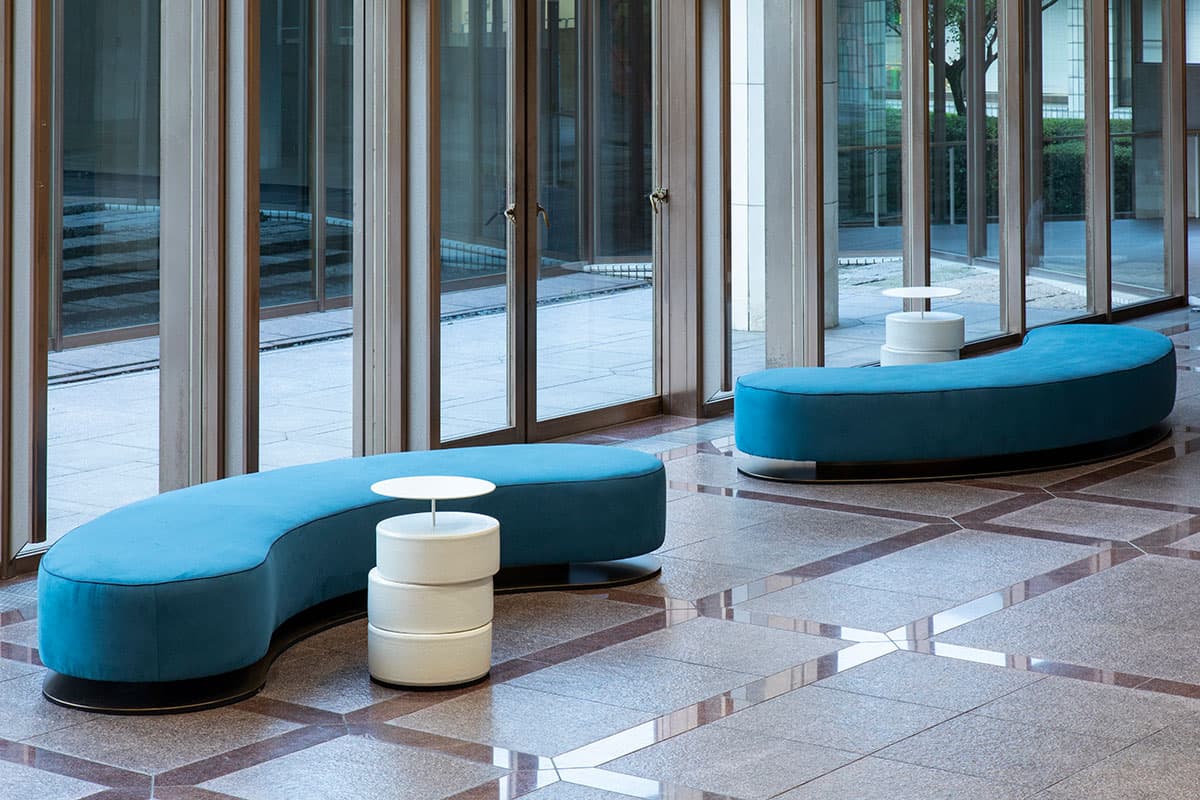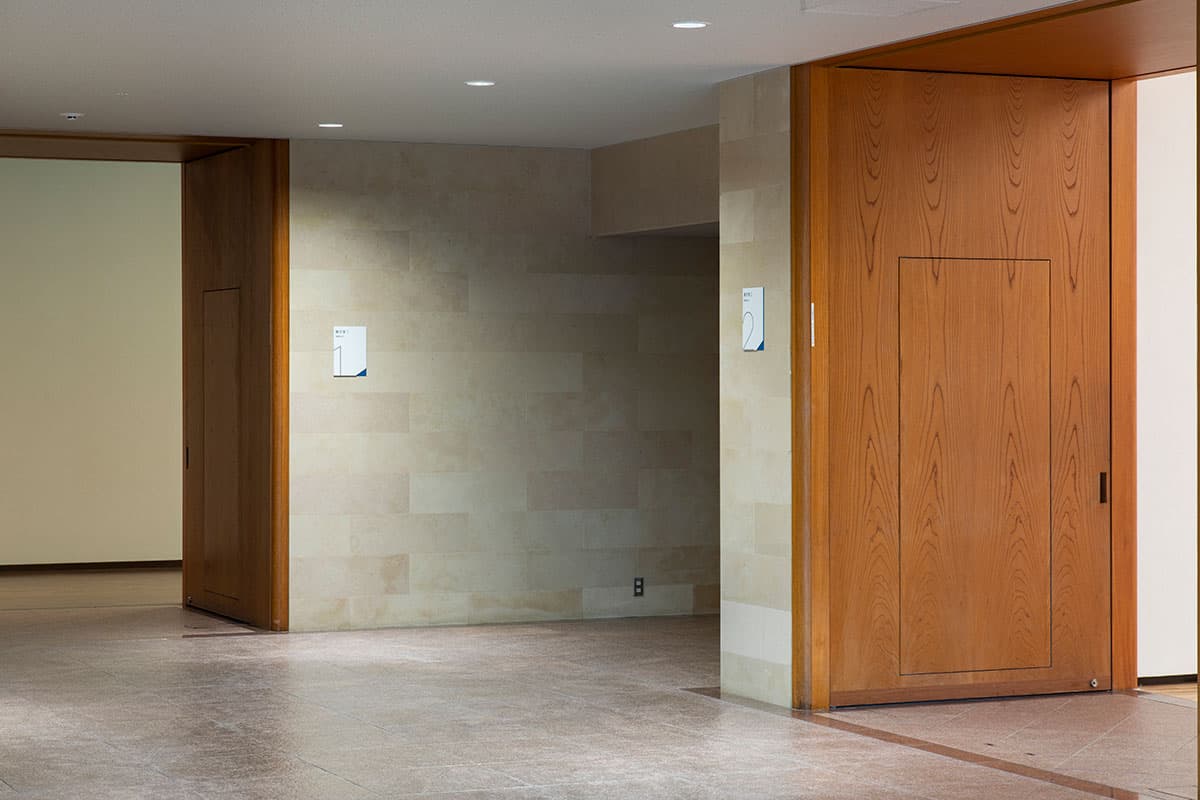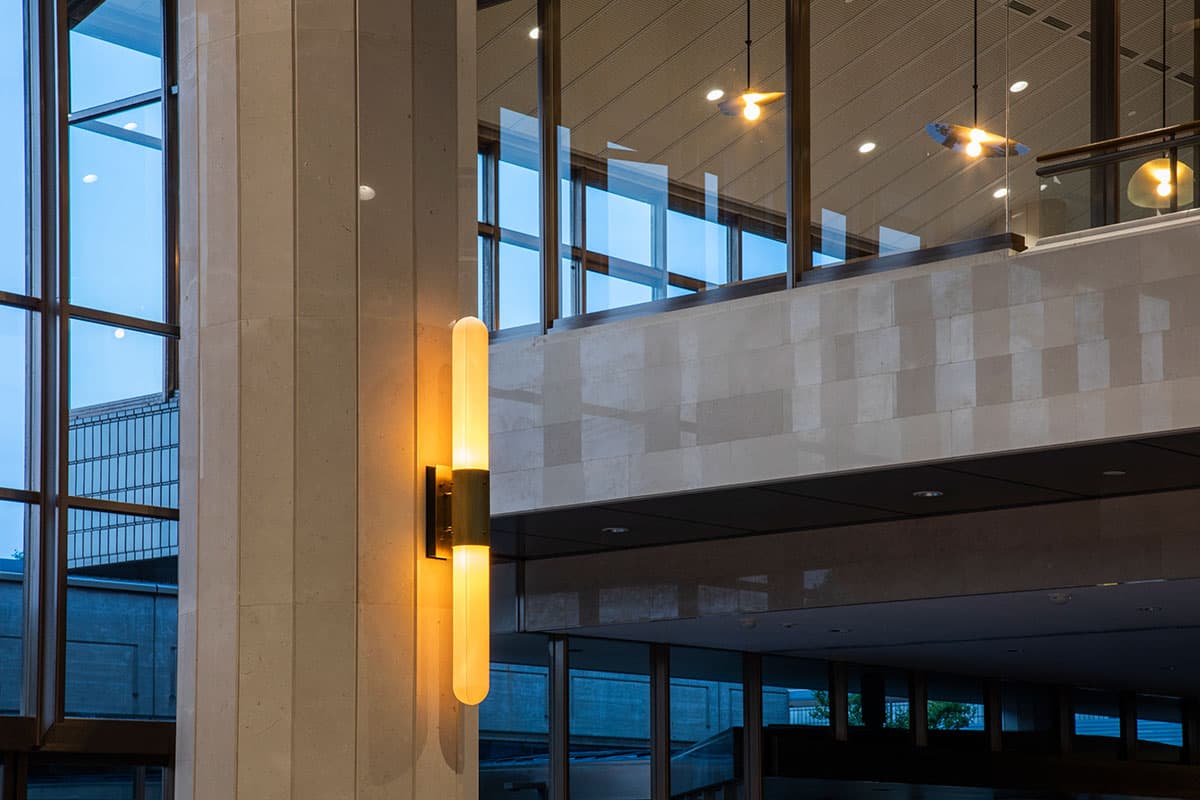When the Shiga Prefectural Museum of Modern Art, Shiga opened in 1984, its first director Uehara Emi set forth three mottoes: to be“a museum that may be small but shines brilliantly enough to illuminate all of Japan,” “a place that satisfies people’s intellectual curiosity,” and “a reception room that welcomes you.” (Incidentally, at the time Uehara was prominently featured in the media as Japan’s first female director of public museum).
Hosaka Kenjiro became the museum’s 13th director on January 1, 2021, and in line with the name change to the Shiga Museum of Art as of April 1, 2021, updated the image of the museum as conveyed in its mottoes to “a living room in a park” or “a museum like a living room.” From a formal space to a place for relaxation: museums change with the times.
The Shiga Museum of Art opened in 1984 as the Museum of Modern Art, Shiga. As of March 2024 the permanent collection consists of 2,790 items, a relatively small number for a prefectural museum, but its holdings of the Nihonga (modern Japanese-style painting) painter Ogura Yuki and the textile artist Shimura Fukumi are unparalleled in Japan. The museum is also known for possessing fine works by major postwar American artists such as Mark Rothko and Robert Rauschenberg, and in 2016 began acquiring works of Art Brut. In terms of education and outreach, the museum is proud to have been carrying out some of Japan’s most innovative initiatives, such as workshops and art appreciation education through games, since it first opened.
When the museum reopened in June 2021 after temporarily closure for renovations, it embarked with the concept of “change and engage.” First, the museum’s name was changed to remove “Modern,” which is limiting in terms of periods and movements. This was because we believe the mission of museums today is “to create spaces where people can experience the diversity of societies and environments more deeply by engaging with multifarious things that people create.” To put this mission into practice, the Shiga Museum of Art is committed to doing the following.
Support creativity, regardless of presence of absence of disabilities, and with attention to gender balance. Building on this foundation, hold exhibitions that provoke thought about the question: “What does art do for people?” Also, create a more unique collection than ever before.
Secure the cooperation of individuals, enterprises, and organizations in Shiga Prefecture, and research and broadly disseminate the many charms of the region in such a way that everyone will want to visit. Also, implement programs that have something to teach all the prefecture’s residents, regardless of age, from beginners to experts, based on a philosophy of universality.
CALL: Creation, Ask, Local, Learning. By making these the core of its activities, the Shiga Museum of Art will continue to engage with a society changing at an accelerating pace, while responding flexibly to these changes. We hope to uphold a model of a museum that is constantly renewing its presentation of itself to the wider world.
Building on the outcomes of surveys and research that form the basis of the museum’s activities, we will carry out the following activities.




